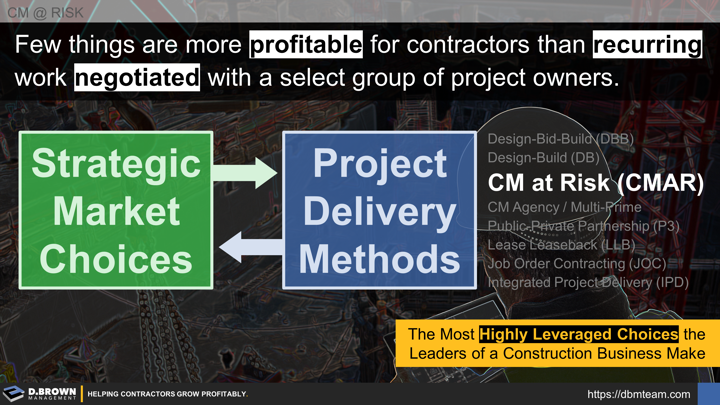Different markets and the project owners within those markets may prefer different project delivery methods. Each of those methods has its pros and cons for all parties involved. There is no single best project delivery method.
- Design-Bid-Build (DBB)
- Design-Build (DB)
- CM at Risk (CMAR)
- CM Agency / Multi-Prime
- Public-Private Partnership (P3)
- Lease Leaseback (LLB)
- Job Order Contracting (JOC)
- Integrated Project Delivery (IPD)
Some of those methods integrate the General Contractor and key Specialty Contractors into the project much further in advance. For example, see this comparison of Construction Manager at Risk (CMAR) to Design-Bid-Build (DBB).
The best choices for your business will depend on several factors including:
- The stage of growth you are currently at and your trajectory for future growth.
- The phase of development you and your management team are in.
- Your current operational capabilities and capacity.
- Your vision and strategic decisions.
- How robust your talent pipeline is and the degree to which you are being impacted by the talent shortages across the industry.
For many contractors and project owners, the right choice is focusing on project delivery methods that integrate all key parties earlier in the process. Construction Manager at Risk (CMAR) is the leading project delivery method for the largest contractors for a reason.
If you choose CMAR or similar project delivery methods as your preferred methods, competing effectively requires building much more advanced business development and preconstruction capabilities.

